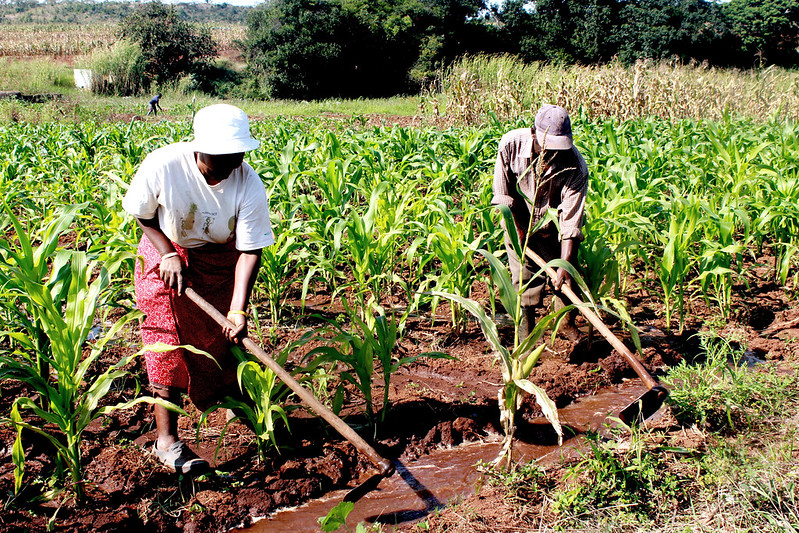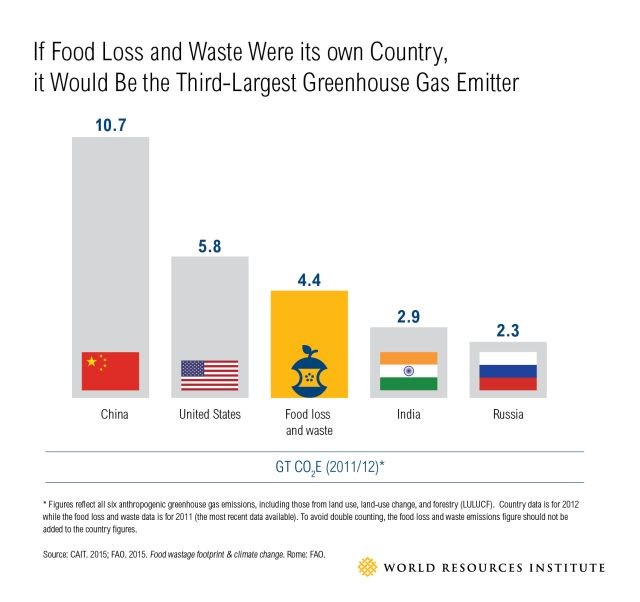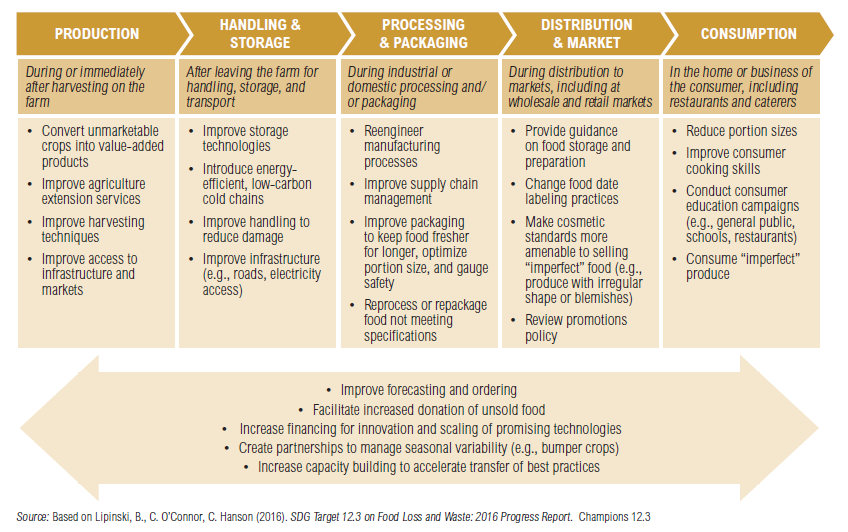A Big Opportunity for Country Climate Plans (NDCs): Reducing Food Loss and Waste

In the run up to the 25th Conference of Parties to the UNFCCC in late 2020, national leaders will be looking for ways to ratchet up their Nationally Determined Contributions (NDCs) to the historic Paris Agreement on climate change. One commonly overlooked solution to climate is to reduce food loss and waste. It can be found on every farm to every fork, and can provide climate, food security and economic benefits—all at once.
But to capture the opportunity, countries need to include “food loss and waste reduction” in their NDCs. Now is the time to do so.
What’s food loss and waste got to do with climate?
 A third of all food produced for human consumption is lost or wasted between harvest and the home. According to the Food and Agriculture Organization of the United Nations (FAO), this food loss and waste accounts for about 4.4 gigatonnes of greenhouse gas emissions per year. If food loss and waste were its own country, it would be the world’s third-largest emitter, surpassed only by China and the United States.
A third of all food produced for human consumption is lost or wasted between harvest and the home. According to the Food and Agriculture Organization of the United Nations (FAO), this food loss and waste accounts for about 4.4 gigatonnes of greenhouse gas emissions per year. If food loss and waste were its own country, it would be the world’s third-largest emitter, surpassed only by China and the United States.
In other words, food loss and waste has everything to do with climate!
Where do these emissions come from?
The greenhouse gas emissions associated with this food loss and waste come from a variety of sources, including:
- On-farm agriculture emissions—including from the digestive systems of cows, manure from livestock, on-farm energy use and fertilizer emissions—for producing food that is ultimately lost or wasted;
- The production of electricity and heat used to manufacture and process food that is ultimately lost or wasted;
- The energy used to transport, store and cook food that is ultimately lost or wasted;
- The landfill emissions from decaying food; and
- The emissions from land use change and deforestation associated with producing food that is ultimately lost or wasted.
What benefits can reducing food loss and waste provide?
Reducing food loss and waste is an example of what’s good for the climate being good for the economy and for people. It’s one of those rare “triple-win” strategies everyone has been looking for from the Paris Agreement. Reductions can save money for farmers, companies and households. Wasting less can mean feeding more. And reductions can alleviate pressure on precious water and land resources—and help address climate change.
Moreover, reducing food loss and waste will help countries meet Target 12.3 of the Sustainable Development Goals, which calls to cut food loss and waste in half by 2030.
How can countries reduce their food loss and waste?
To realize these benefits of reducing food loss and waste, governments should follow a straightforward “Target, Measure and Act” approach:
- Target: Targets set ambition, and ambition motivates action. Governments should adopt explicit food loss and waste reduction targets aligned with SDG Target 12.3.
- Measure: The old adage “what gets measured gets managed” is true for food loss and waste as well. Governments should measure food loss and waste within their borders, publish the results, and monitor progress toward achieving the reduction target over time—measuring at least every five years.
- Act: In the end, action is what ultimately matters. Based on information gathered from measurement, governments should develop and implement strategies for tackling their food loss and waste hotspots. Which strategies are most appropriate vary between countries where their loss and waste occurs in the food supply chain. Food loss and waste tends to be more prevalent closer to the farm in developing countries and closer to the fork in developed countries.
As the chart below illustrates, there are a lot of actions that a country (and its companies and citizens) can pursue. Which are most relevant will be a function of where the hotspots of food loss and waste in your country are.
Possible approaches for reducing food loss and waste (not exhaustive)

How can a country get started?
One effective way to get started is for countries to include targets and strategies for “food loss and waste reduction” in their NDCs. This helps focus government attention, private sector efforts and public-private investment. To date, however, only about a dozen countries have done so. More need to.
Fortunately, there is plenty of technical support available to help countries in this effort. Initiatives such as the NDC Partnership can help countries strengthen their NDCs and find the technical and financial support they need to implement new ambitions on food loss and waste reduction.
Why now?
At Paris, countries agreed to put forward NDCs by 2020 as part of five-year cycles to ratchet up ambition. The 2020 UNFCCC COP 26 is a critical opportunity for leaders to make public announcements that they will address food loss and waste in their enhanced national commitments. The time to strengthen action is right now.
So, countries of the world, use this opportunity to tackle food loss and waste in your NDCs—and capture climate, economic and food security benefits all at once.
This blog was written by Craig Hanson, Vice President For Food, Forest, Water & The Ocean of World Resources Institute (WRI). WRI is a host of the NDC Partnership Support Unit and ex-officio member of the NDC Partnership. The blog was originally published on WRI’s website and can be found here.
